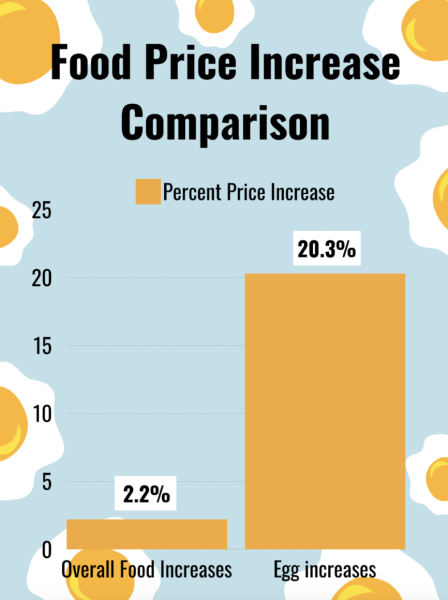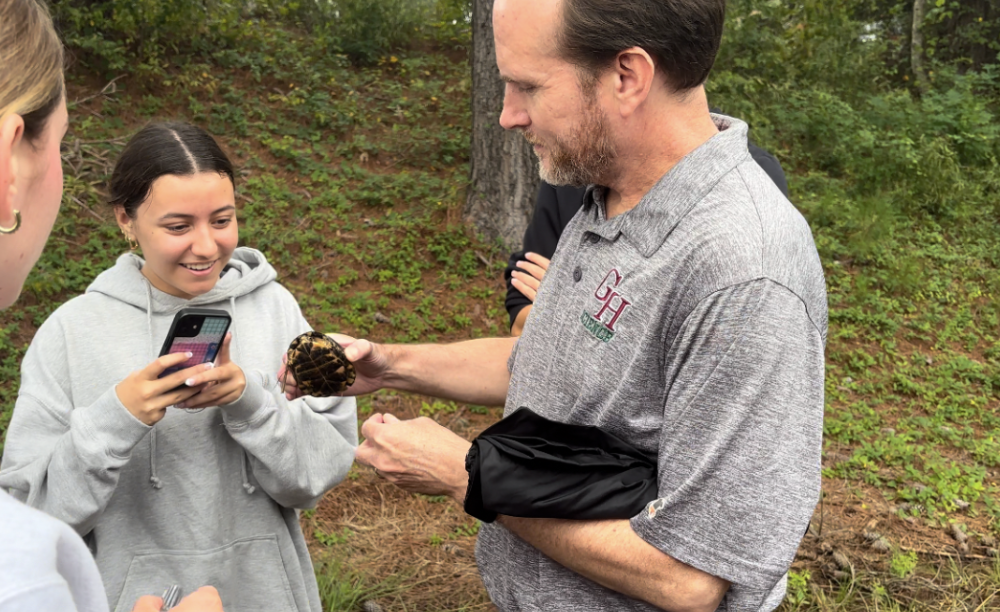On Feb. 1, 2025, 100,000 eggs were stolen from a distribution trailer in Pennsylvania amounting to $40,000. The prominent breakfast chain restaurant, Waffle House, has added a $0.50 supercharge for each egg ordered. Avian influenza – otherwise known as bird flu – continues to drive up prices for retailers and consumers by creating multiple egg shortages.
Avian influenza was first identified around 1996 in a waterfowl – a variety of birds and swans – in Southern China. The virus would go on to spread to North America when infected birds migrated from Asia. Although the virus mutated into several strains, they rarely circulated across the globe and were largely confined to wild-type incidents until 2022.
Amidst the 2020 pandemic, interbreeding between poultry and wild bird viruses led to the highly pathogenic H5N1 strain that would be the primary strain causing the epidemic today. In early 2022, this strain of the virus passed around poultry worldwide, beginning the outbreak.
H5N1 is the primary strain of avian influenza (H5) spreading to birds. Strains of the virus can range in severity: while most strains are non-lethal, more severe strains have a mortality rate of up to 90-100% in infected birds. H5N1 is a highly pathogenic strain of avian influenza, qualifying as one of the more severe strains.
Overcrowded and dark chicken farms can induce difficult living conditions for poultry in farms. These same conditions make avian influenza extremely easy to spread among a flock. Once one chicken is infected, the products produced from the entire flock cannot be used in commercial distribution. A majority of the shortage comes from the number of flocks where infected chickens are present, rather than the sole infected populations. In fact, the USDA compensates farmers for chickens that they must euthanize with the virus, motivating farmers to isolate quarantine and then depopulate infected flocks.
A challenge posed to chicken farmers is the difficulty in identifying avian influenza, which is noted with vague symptoms that can be hard to spot. Some commonly-presented signs of infection, however, are If a bird suddenly dies without prior symptoms, has a lack of appetite, produces odd shaped eggs, has discoloration or has difficulty breathing.
About 21.1 million birds have died from avian influenza as of Feb. 7, according to a report published by the United States Department of Agriculture (USDA). 16% of the total bird losses come from North Carolina, one of eight states where the flu broke out.

Egg prices are high right now, and are only expected to continue to rise. According to the USDA Food Price Outlook 2025, overall food prices are expected to increase by 2.2% overall in 2025. In comparison, egg prices are expected to increase by 20.3%.
The rampant hoarding of eggs combined with the general shortage of them continues to ramp up the prices as more poultry continues to die from bird flu. Grocery stores are putting limits on the number of eggs that can be bought in a single visit. Trader Joe’s, Kroger, Whole Foods and Aldi all police the number of on consumer egg purchases per day. Even Costco, a store known for selling in bulk, is limiting egg purchases.
The USDA is taking various measures to prevent the spread of the bird flu. They claim that the most important precaution is biosecurity, the measures used to prevent contamination of animals, property and people. Some good biosecurity practices include trying to practice good hygiene, avoid mixing species and checking for sick animals frequently.
The ultimate goal of the USDA is to create a vaccine to combat bird flu. Creating a vaccine for dairy cows, among other species, would help stop the spread of the virus – until a new strain emerges. As of now, the public continues to grapple with the egg shortages as vaccines and solutions efforts are underway.














































































